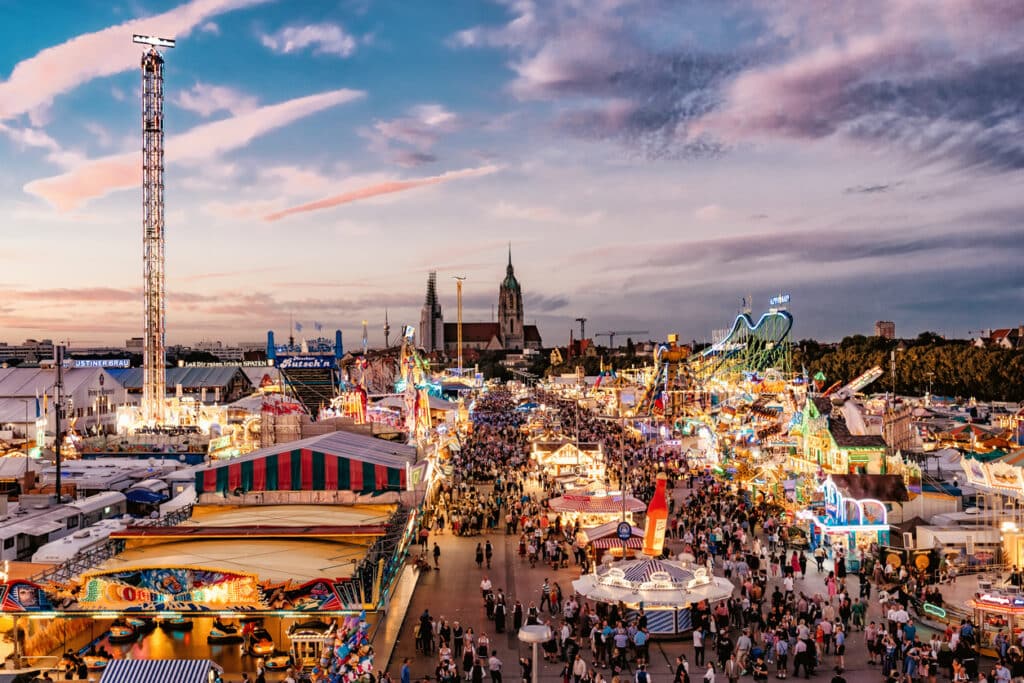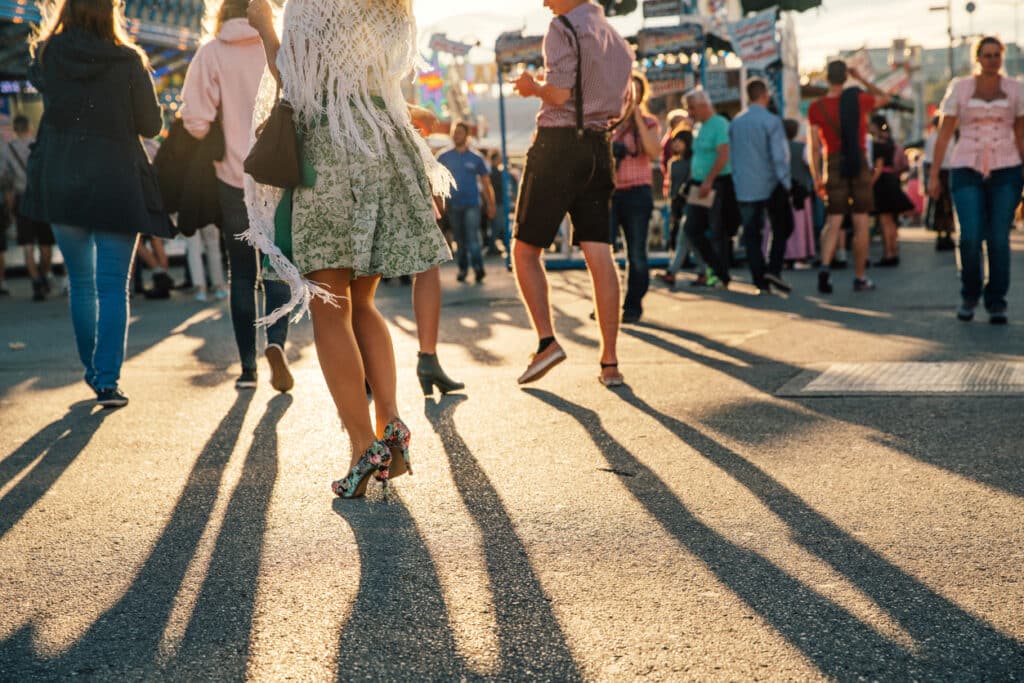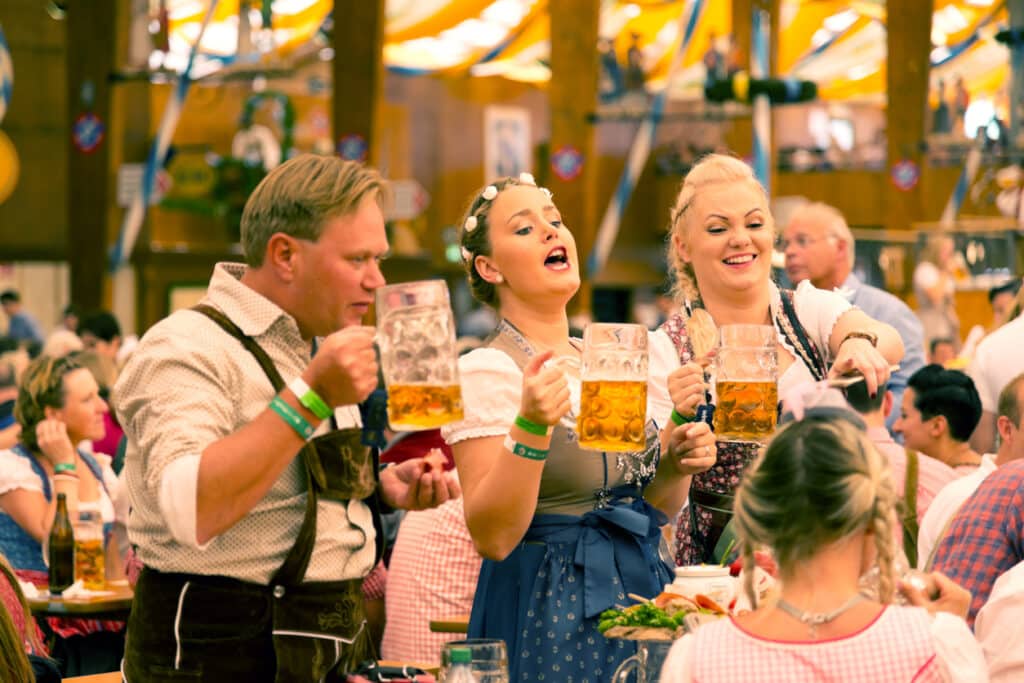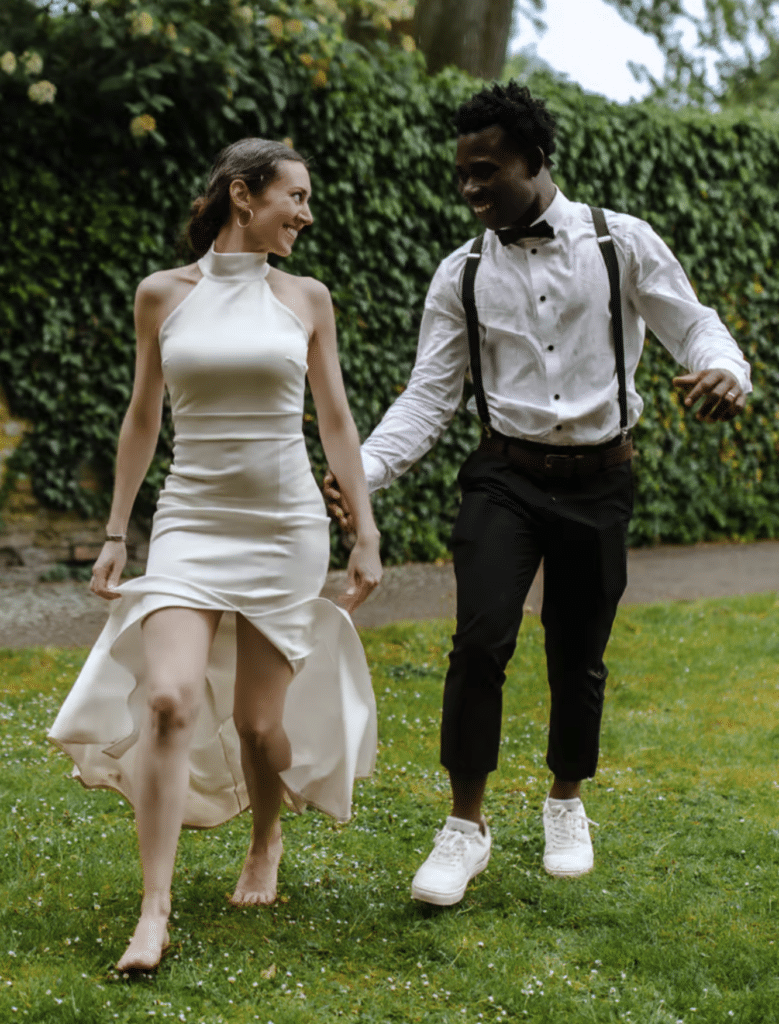The Basics
“Der Spass kostet doch was.” In other words, the fun costs a bit!
No one ever said Oktoberfest was cheap. You can drop a bundle in a heartbeat because, essentially, the “Wies’n” is a gigantic day-and-night club, complete with non-stop entertainment, music, activities, and events.
These raise the cost of a liter of beer from about €2 in the local supermarket to €11 or more at all of the 15 beer tents where the city’s six major breweries’ – Augustiner, Hacker-Pschorr, Hofbräu, Löwenbräu, Spatenbräu, and Thomas-Paulanerbräu – beers flow.
This also holds true for the dozens of smaller tents or facilities offering food and beverages where poultry, beef, sausage, sandwiches, seafood, vegetarian fare, as well as pastries, fruits, sweets, coffee, tea, and soda are available.
In truth, the Wies’n is an entire city complete with electricity, running water, gas, waste water plumbing, emergency, police, fire, security, and sanitation services that have been put in place just for Oktoberfest. Entire restaurants serving up to 10,000 guests simultaneously have been assembled at great cost to make Oktoberfest what it is today. The prices may be high, but it is an unforgettable experience and an annual highlight for those lucky enough to attend.

Aerial view on Oktoberfest in Munich. Credit: golero
Arrive in Style
Public transportation is the best, cheapest, and fastest way to go.
For those lucky enough to live or be visiting in or near Munich, or south of the Weisswurst Equator, the Theresienwiese (site of the event since 1810) is easily reached by tram, subway, S-Bahn, rail, or bus. Extended MVV public transportation operating hours, more frequent scheduling, longer trains, trams, and buses encourage attendance, and extra personnel simplify the ticketing process.
So with apologies to Duke Ellington, take the U (not the A) train: The U4 and U5 subways deposit you right near the main entrance by St. Paul’s church or on the adjacent Heights. From the latter stop, Theresienhöhe, you are provided a spectacular overview of the entire Oktoberfest grounds and a great panorama of Munich. The U3 and U6 subways also have stations within 500 meters of the Wies’n as well (Goetheplatz and Poccistrasse stations).
You can save big money with a personal or group day, 3-day, or tourist card week pass ticket for friends and family. These are valid for bus, tram, subway, S-Bahn, and even regional rail within the MVV Munich Metro Area transit system.
A kilometeror or so hike from either the main rail station (Hauptbahnhof) or the Hackerbrücke S-Bahn stop increases your anticipation, appetite, and thirst as you march to the Meadow (Wies’n) together with hundreds of others in Lederhosen or revealing Dirndles or far less traditional attire.
Forget about driving because there is no parking for cars or bikes within a kilometer of the Wies’n. Major police presence in, around, and nearby is prevalent, and the city is out to collect, with meter-maids and men abound. A single, one-litre mug of beer can easily turn into two or three at Oktoberfest, and can put your license and livelihood in jeopardy.

Oktoberfest sunset. Credit: Nikada
Timing is Everything
Whenever possible, try to go to the Wies’n early in the day. Weekdays are always best. The beer is freshly tapped, food is hot, and service is attentive and snappy. There’s plenty of room in the tents outdoors, and the streets and alleys are wide open and easily navigable. After 5 or 6pm, when folks get out from work, it gets very crowded and just getting into a tent without reservations is at best, very difficult.
Weekends are extraordinarily crowded from the Opening Day’s “Wies’nwirt Auftritt,” a short inner-city parade of brewers on Saturday, September 16, prior to the noon kickoff. Thereafter on opening Sunday, there’s a three-hour-long, five-mile parade with more than 150 units and dozens of bands and folk groups all in uniform or costume. If you plan to visit the Sunday after opening day, the Wies’n may become impassable with crowds, so getting into the tents early (well before 11am) is essential.
The beer flows from 11am on. The earlier you come, the lighter the crowds, and easier it is to actually see the huge kilometer-square venue with all the exhibits, carnival rides, eateries, and tents.
Last call in all tents is at 10:30pm, with service stopping at 11pm. However, there are plenty of after parties in the city at the Löwenbräukeller, Stieglmaierplatz, Hippodrome in the Postplatz near the Hackerbrücke, and many other venues.
Tuesdays are official Children’s Days, meaning from 10:30am to 3pm, rides are reduced in price, and many smaller eateries offer discounts for young and old alike. Be prepared to be delighted watching squadrons of grade-school children in distinctive class shirts walking hand-in-hand with their teachers to the rides and exhibits.
Free brass concerts and a church service take place on the second and third Sunday mornings of Oktoberfest to delight the ear and replenish the soul. Both events take place at the foot of the mammoth Bavaria statue. Again, arrive early (before 10am), if you wish to enjoy these festivities.

Oktoberfest in Munich. Credit: kamisoka
Beer, Food, and Tents
Outdoor tables in the biergärtens surrounding or adjacent to the big tents are not reserved, and are on a first-come, first-serve basis. It’s always polite to ask first – “Ist hier Platz frei?” – when joining a partially -occupied table. Be sure to say “Prost!” when raising your beer on high, saluting your neighbors at the table, and don’t forget to return their greeting as well.
Outdoors as well as in, waiters are assigned tables and only your wait person may take your order. Otherwise, go to the self-service counter for beer or food. You may bring your own food to the outdoor biergärtens, but not indoors.
For a fraction of the price, you can buy bigger and better pretzels (Brezn), radish bunches, sliced meats, cheese, sausages, roasted chicken or ribs at area shops or at the stands outside the Oktoberfest grounds for outdoor consumption. However, beverages for adults must be purchased at the venue. Bottles for infants and small children are allowed.
Another aspect of Oktoberfest is the “Olde Wies’n,” a separate area south of the Riesenrad (huge ferris wheel area where admission is charged). Established a few years ago, the Old Wies’n has proven to be a hit. Its nostalgic tone harkens back to O’fests of yesteryear with old-fashioned rides and entertainment that reflect a simpler time, when the fest was still Bavaria’s own national event during the austere post-war years of the 1920s, 50s, and early 60s. Many traditional dishes grace the menus, the tents are less packed, and service is friendly. The beer is even served in old-fashioned, salt-glazed grey clay mugs rather than modern-day glass steins.
Indoors, table reservations are valid from 4pm on. From 11am to 4pm, anyone can plop down where space is available, but shortly before 4pm, guests without reservations must move on. Entire tables seat 10 people, and are usually sold out by June or July. The cost to reserve a table is 2 litres of beer and half a chicken, or the equivalent, per person. This comes out to about €350 cash in advance at most tents. Go to the Betriebsbüro or business office in the tent to see if reservations are still available or to buy coupons.
Each brewery issues beer and chicken coupons, including a separate tip fee, which can be used in any tent where its beer is served. Some breweries, like Spaten, have two, three, or more tents. Coupons do save visitors cash, but are not interchangeable, meaning a Schottenhamel tent coupon is not valid elsewhere. Unused coupons might be redeemable at some of the establishments after Oktoberfest, but be sure to ask ahead.
Savvy Spending
By purchasing coupons with cash, check, credit card, or bank transfer, you can budget your Wies’n visit, knowing in advance just how much you want to spend without any rude awakenings. It’s amazing how fast Euros “evaporate” at Oktoberfest, between all the delicious snacks, souvenirs, and adult beverages.
One major way to conserve your cash is to eat your main meal midday. All of the major brewery tents have a lunch special: a main dish with meat, fish, or vegetarian selection offered on weekdays. The price is only about €10, and includes potatoes, noodles or rice, and a vegetable, and is less than the price of a standard roasted half chicken! The menus are always published in advance, so eat fulsomely and cheap at noon, and save the other goodies for late afternoon or evening.
Munich’s bars, taverns, biergärtens, and restaurants offer high-caliber Märzenbier (5.8-6.3% alcohol) bier at much gentler prices than at the O’fest where the beer is only 5-5.5%. These are wonderful alternatives to the Wies’n before or after hours and as a budgetary consideration, but they are no substitute for the real thing – a mass or two at the Wies’n regardless of alcohol content!

Oktoberfest in Munich. Credit: Nikada
Security
Given the world’s situation and due concern for your safety, the entire Wies’n is now surrounded by a steel link fence two meters high. Entrance points are staffed by special security agents and police. Each person entering the grounds must show the contents of handbags and packages. As a precaution, backpacks, large bags, and suitcases are not permitted. They can be checked for a fee at special wardrobe vehicles outside the grounds.
Personal body searches and pat downs may be conducted in a private area as deemed necessary. No weapons of any sort, fireworks, sharp items, including corkscrews and Lederhosen decorative costume knives, are allowed on the premises. Pets are also not permitted, but service animals are allowed.
Additional uniformed and undercover police, armed forces members, and security agents constantly patrol the grounds to assure crowd control and preclude potential situations fueled by alcohol-driven enthusiasm.
Oktoberfest with all of its wonderful wackiness continues to be one of the world’s greatest options for fun and enjoyment. It is both a celebration and a caricature of Bavaria where, for a few days a year, the whole world is “Boarisch,” and everyone salutes Bayern’s colors of white and blue and Munich’s golden yellow and black. It is a great place to meet and party with friends and family, with colleagues and clients, and, for that matter, total strangers.
So when someone says “Auf geht’s, zer Wies’n,” drop whatever you’re doing, grab your wallet, and head on out!
Article written by Tom Lipton. Tom has lived and worked in Munich, on and off, since 1963. He is an avid Oktoberfest devotee.

